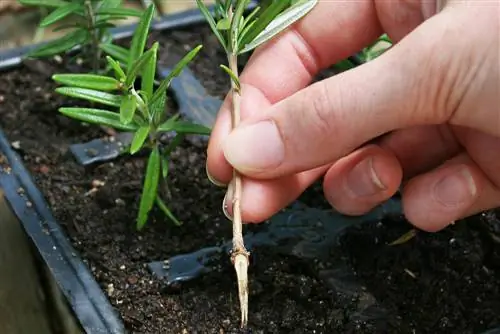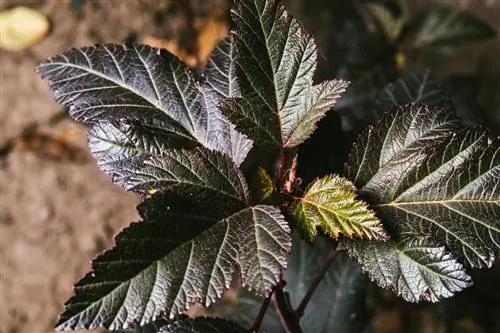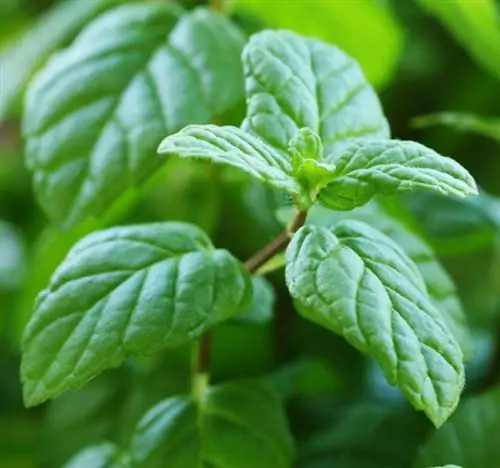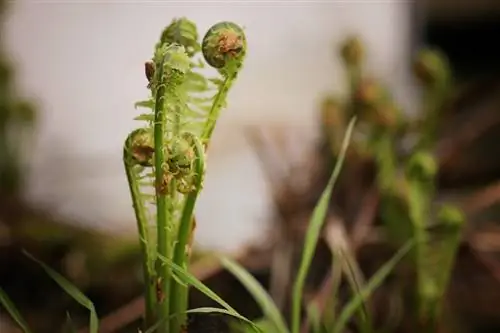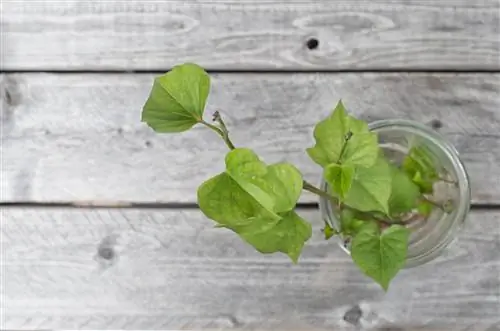- Author admin [email protected].
- Public 2024-01-05 20:48.
- Last modified 2025-01-23 11:22.
Cuttings are the easiest way to propagate a plant. The process is so simple that even inexperienced gardeners will soon be able to enjoy new, home-grown specimens on the windowsill or in the garden bed. Are you still unsure how to proceed with taking and growing the cuttings? In this article you will find detailed instructions and helpful tips on what to pay attention to.
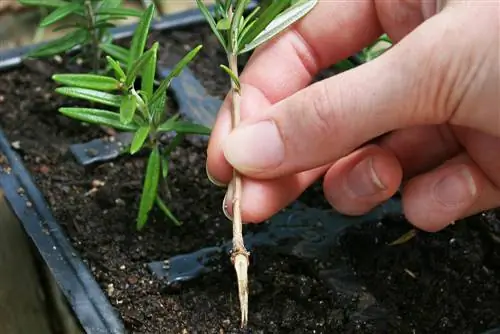
How do I successfully grow cuttings?
To pull cuttings successfully, cleanly cut off young, he althy shoot tips, remove the lowest leaves and shorten large leaf areas. You can then root the cuttings either in a glass of water or in seed pots and store them at 20°C room temperature until they develop roots.
Interesting facts
Propagation of a plant through cuttings is one of the most popular methods of propagation, not only because of the simple procedure. Only with cuttings can you pass on the positive properties of the mother plant to the next generation. When propagating cuttings, the genetic material is transferred 1:1. The new plant resembles its parentage down to the smallest detail.
Cut cuttings
Cuttings are usually the young shoot tips of a plant. These can be easily separated with a knife. Make sure your tool has a sharp blade to ensure a clean cut. Frayed wounds and cuts heal slowly and increase the risk of germs getting inside the plant. Ideally, disinfect the blade of the knife before and after the procedure.
Tip
Don't just think about protecting your plant from cuts. As a precaution, you should also wear safety gloves. This is particularly necessary if the chosen plant secretes poisonous or skin-irritating juices.
Requirements for the cutting
Basically, it is very easy to propagate a plant with cuttings. If you still don't succeed in raising them, there is no reason to despair. It's possible that the cutting you chose simply didn't have the best characteristics for independent root formation.
Next time, make sure that your cutting isn't too soft. These shoots usually rot as soon as they are separated from the mother plant. Likewise, the cutting must not already be woody. Old shoots often no longer develop roots. However, young shoots must be of sufficient length. It goes without saying that the shoots should be free of pests.
How to proceed
- place the knife around 2 to 3 cm away from the leaf stem
- separate the lowest leaves there
- shorten large leaf areas by half from the tip
Planting cuttings
In order for your cuttings to grow into independent young plants, they must form roots. To promote this, you have two options to choose from:
- Rooting in a glass of water
- Rooting in nursery pots
Rooting in a glass of water
You can watch the roots grow in the water glass. Keep the environment consistently moist by misting the pairs of leaves. Initially, the cuttings cannot absorb water through the bare stem.
Rooting in nursery pots
With this variant, you save yourself having to replant the cuttings and don't risk damaging the roots. However, cultivation takes longer. Choose a substrate consisting of sand, peat and compost soil.
Note: For most plant species, the germination time is 2 to 3 weeks. During this time you should keep the cuttings at a room temperature of 20°C and check the growth regularly.

